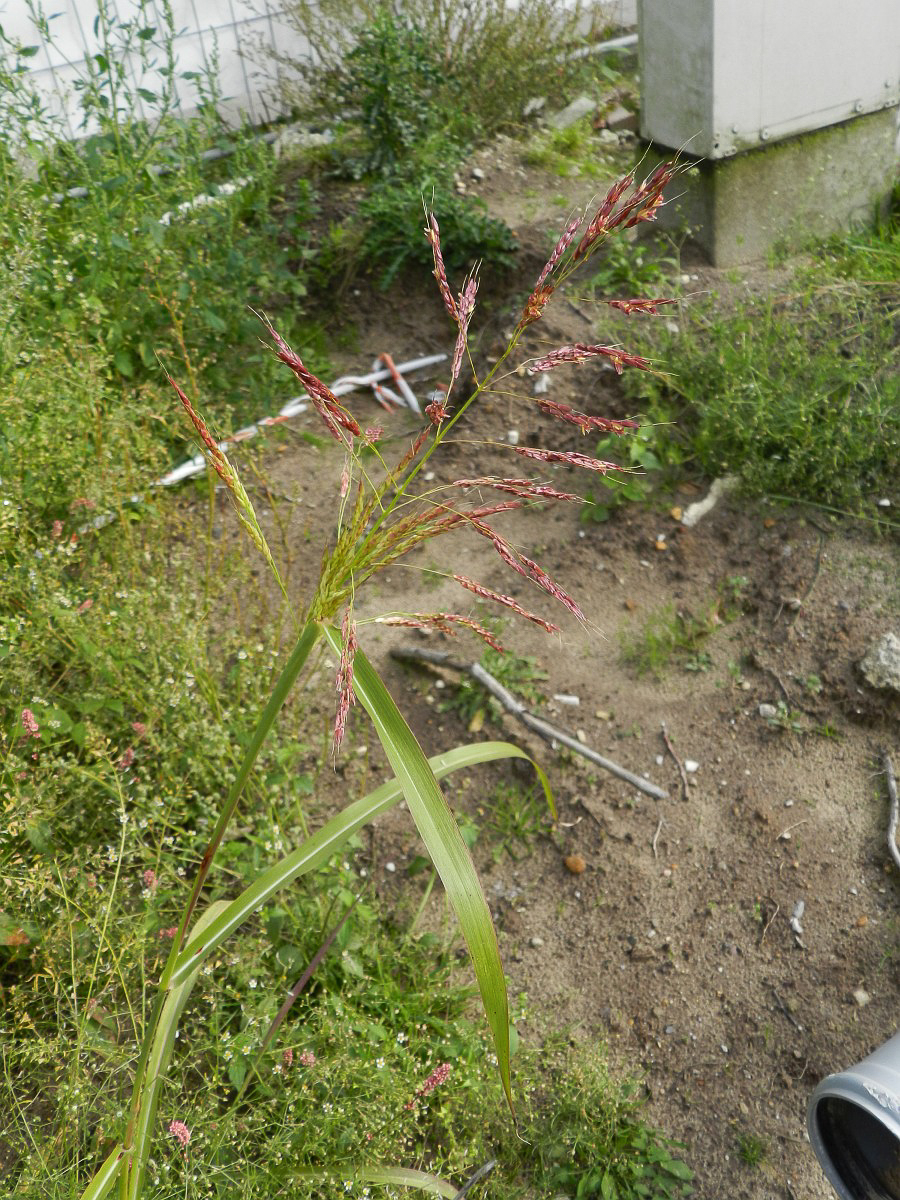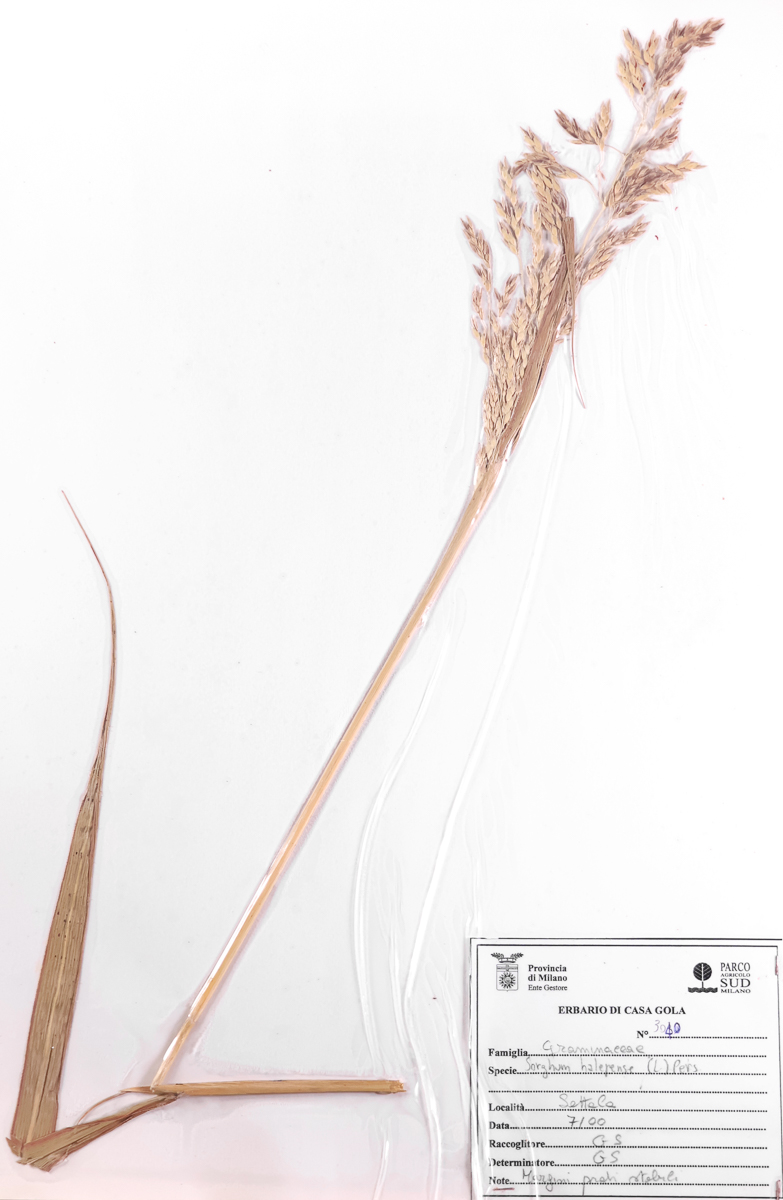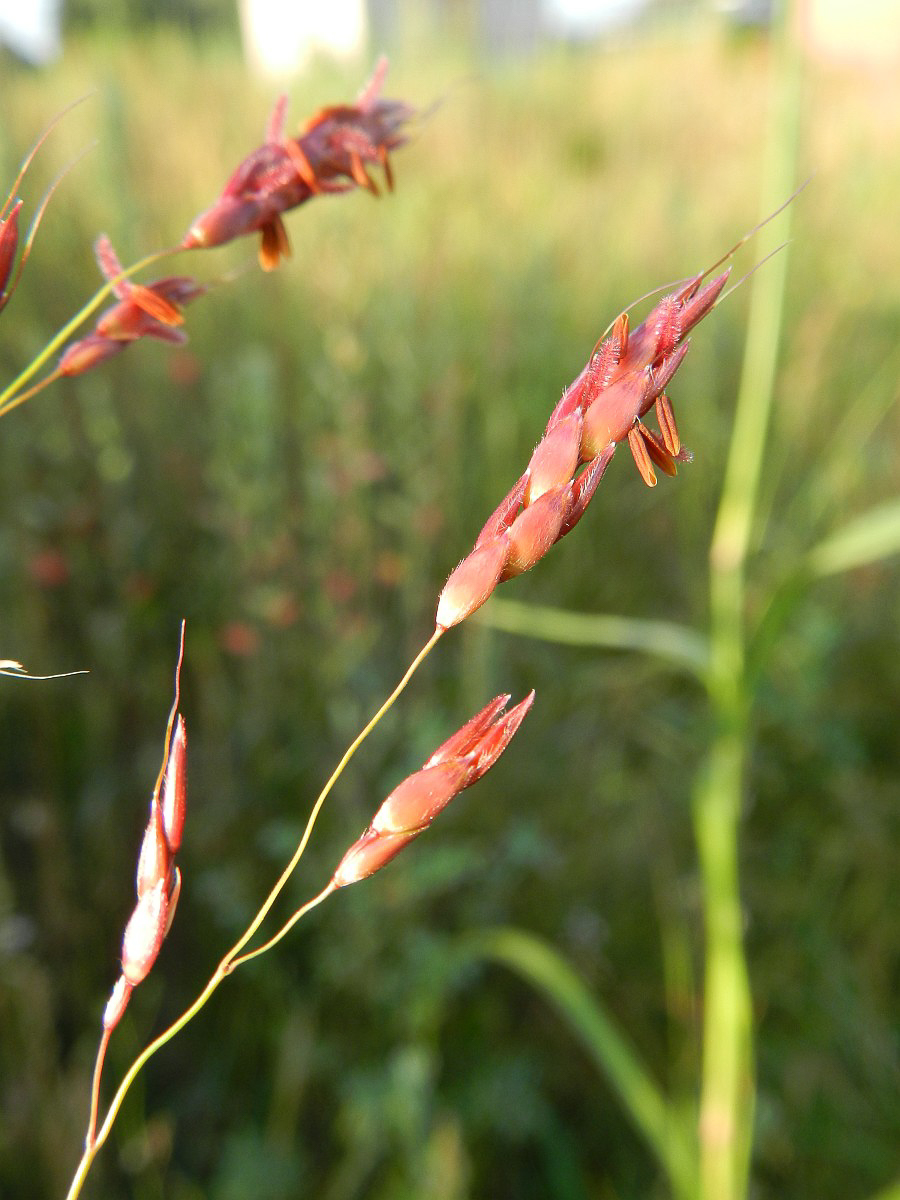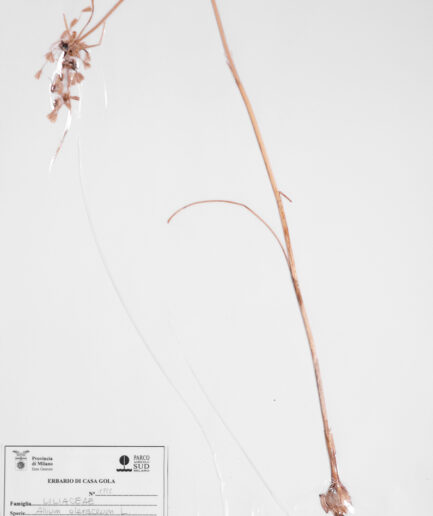Aleppo grass
Scientific Name: Sorghum halepense (L.) Pers.
Family: Poaceae
MORPHOLOGY
Habit and Size: Perennial plant, 30-180 cm tall, with an extensive creeping and fleshy rhizomatous system, whitish or pinkish in color.
Stem: Compressed-cylindrical, erect, and robust stems.
Leaves: Dense, linear basal leaves with flat curved blades, 1-2 cm wide with rough and scabrous margins towards the base. The cauline leaves have similar characteristics but are sparse, all glabrous, non-glossy, sometimes tinged with a purplish color, and equipped with a well-defined white central vein.
Flowers: The inflorescence is a broad pyramidal panicle with more or less spreading branches, resembling an awned structure, consisting of both fertile and sterile spikelets. The rachis branches are bifurcated. Spikelets, 4-6 mm long, are single-flowered, articulated together in scattered clusters, paired along the branches, and ternate at the apex. The central, sessile spikelet generally has a dorsal or twisted awned lemma at the base (5-15 mm), hermaphroditic, and fertile. The lateral spikelet is pedunculate and male without an awn, and the other lateral sessile spikelet is abortive, with a mutic or very fine awned lemma. Blooms from June to October.
Fruits and Seeds: The fruits are caryopses.
DISTRIBUTION AND HABITAT
Alien weed of maize and numerous other herbaceous crops, found in fallow lands, ruderal zones, and abandoned fields, from 0 to 600 m.
Photo: under free license from Saxifraga and Rutger Barendse





















